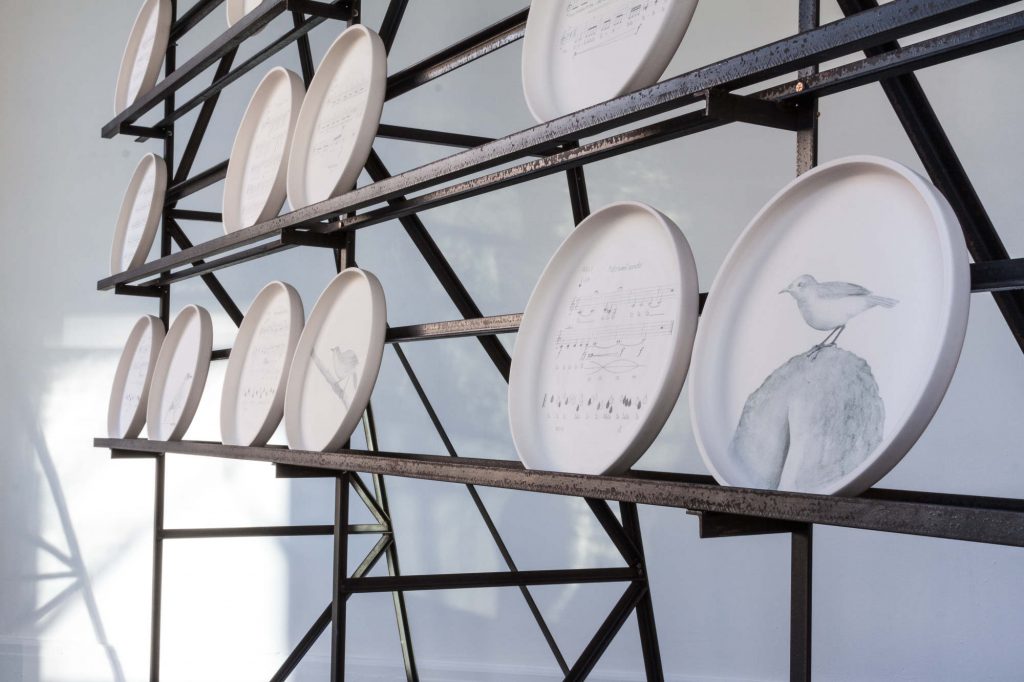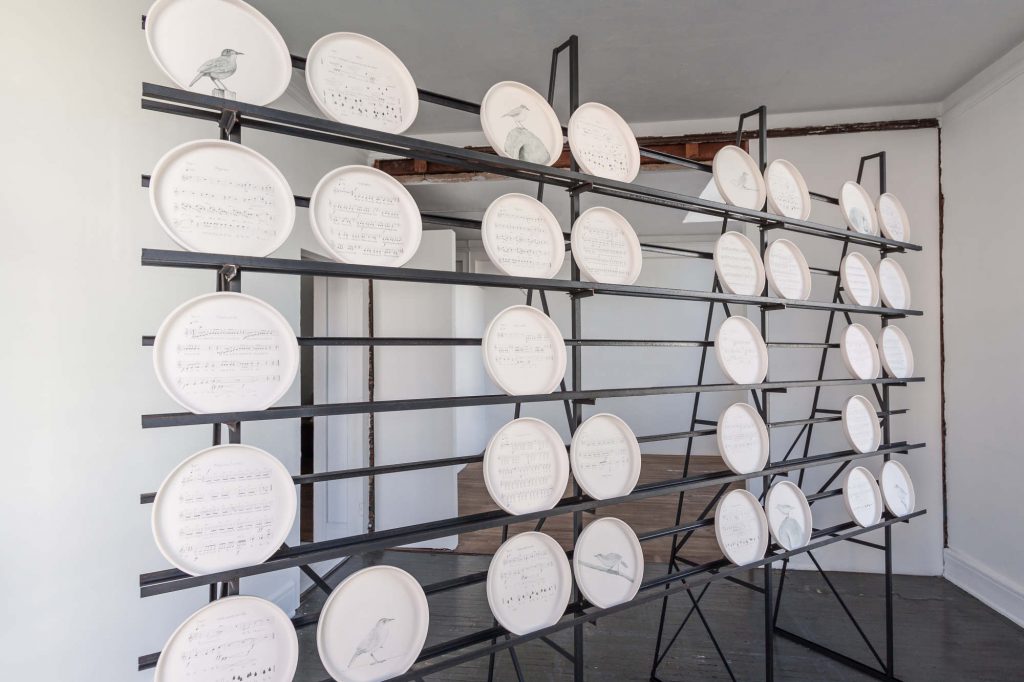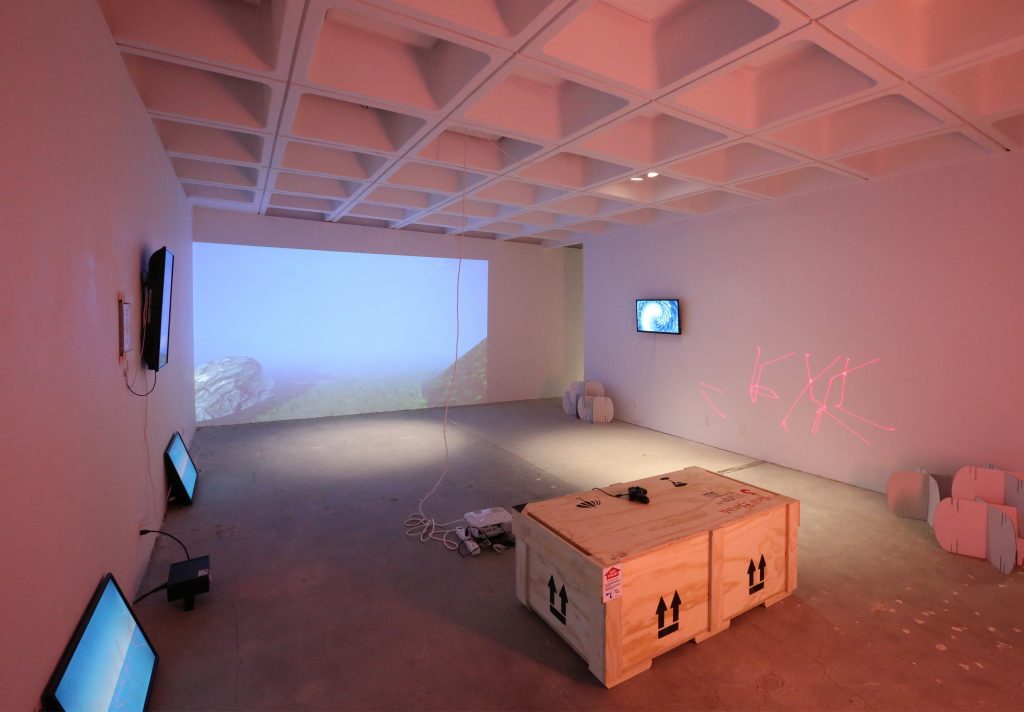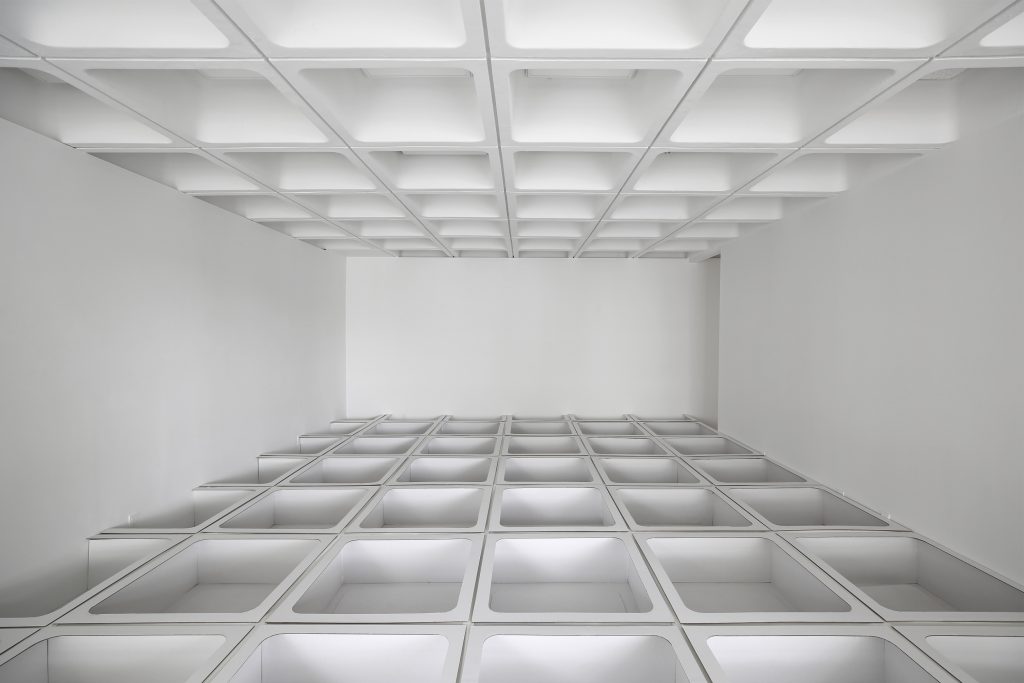Jimena Sarno was set to have her sculpture and sound installation, taracatá trabaja, featured in the Massachusetts Museum of Contemporary Art (MASS MoCA) in March of 2020.
“It was going to be a performance with four singers. We had tickets and everything. A week before leaving, the lockdown started.”
Sarno, a multidisciplinary artist and educator based in Los Angeles, tells an all too familiar reality for many artists at the start of the pandemic, when in-person exhibits and gallery shows were postponed or cut short due to the global COVID-19 crisis. Fortunately, Sarno’s show ended up getting extended and is now going until October. But, the piece will not include the performance aspect, which completely removes the sonic portion of the installation.
Artists around the world, including the Los Angeles area, have struggled to showcase their work in the way that it’s intended. No matter the work’s initial medium, it has been particularly difficult for artists to translate their work online or in a socially distant context, especially when the world has gone virtual in almost all ways.
“There’s just a real burnout of screen time right now,” says Sarno.
At the beginning of the pandemic, Sarno says that there seemed to be a “glimmer of hope” for a structural change within the art market. As stay-at-home orders persisted though, no member of the art world could predict when or if in-person viewing was even coming back. This notion caused many art institutions to start shifting to online formats and have their artists create digitally at a rapid speed.
“Institutions were pressured to have digital content and continue to produce and push to reopen. So, I think that sort of glimmer of hope for change dwindled; now, we are expected to produce work at the same rate, as if nothing happened, and present it in a digital format.”
Many artists in Los Angeles, including Sarno, have to work more than full-time in order to sustain a living, even under normal circumstances. This can mean teaching multiple art classes virtually at colleges and universities on top of continuing their artistic practice.
Casey Reas, a multimedia artist and art educator at the University of California, Los Angeles, had to turn down my request for an interview, because he was so overextended with work.
Reas said over email: “For me, the pandemic has made teaching far more complicated and has increased childcare responsibilities with remote school. These changes have led to my need to decline your invitation.”
This is the case for a lot of artists with families who are also art educators. Jean Robison, also a multimedia artist and a professor at the Roski School of Art and Design within the University of Southern California, expressed her difficulties in trying to balance her role as a mother, teacher and artist.
“The pandemic has impacted my work, the main reason being that I don’t have time to make work because I’ve got my two kids that need to be homeschooled,” said Robison. “The pandemic has really made it so that I only have time for teaching college and teaching elementary school.”
Robison is also a part of an art collective, Finishing School, which has presented a number of socially-driven shows, performances and workshops across the country and abroad. They have been unable to meet and produce any work throughout this pandemic because of each member’s intense workload and increased responsibilities.

“We’re all homeschooling; we’re all stressed out, just like everybody in the world. And we obviously haven’t had an in-person meeting in over a year.”
Nevertheless, Robison said it’s been interesting to see how members of the collective and of the broader art community have been so resourceful over the pandemic in creating different kinds of art.
“Everything just went on hold for us, and I feel like a lot of people got to really explore different avenues. It’s been amazing to see what people have come up with,” said Robison.
Despite the limitations the pandemic has brought about, Finishing School has begun their first project since the start of quarantine in March of 2020. It will be showcased later this year in an outdoor space and will focus and give appreciation to trees that continually “commemorate time and bear witness to local histories,” according to the project’s description on the collective’s website.
Many socially distant outdoor shows have been an alternative to in-person inside viewings. Jody Zellen, also a multimedia artist and writer, said that she has been to drive-by art shows around the Los Angeles area.
“I thought that was a really fantastic way to bring people together – apart – and have people look at things that didn’t need the regular gallery space for viewing,” said Zellen.
In terms of online viewing rooms, however, Zellen has mixed feelings.
“If it’s a famous artist, and I’ve seen their work before, I can just purchase it off a PDF. I don’t need to see it in person. So I think in that sense, there is value to online viewing rooms,” Zellen said. “But I don’t think that they should replace going to see the actual artwork in any way. With just a picture, there’s no way to get the nuances of [the artwork]. It’s really different, and my guess is probably artists want people to see their actual work.”
Another alternative to the issues with in-person viewing in a pandemic is making digitally-based art. But is that what artists who usually work with tactile material are doing? Zellen thinks not.
“I don’t think painters and sculptors are suddenly going to say ‘Oh, digital art is the way to go now.’ There’s no tactile experience in it. And I think a lot of artists really crave or go back on needing to make things that are more tactile.”
In addition to making installations, paintings and drawings, Zellen is also a net artist, using browsers, phone apps and even AR as media for her artistic practice. Working with such a range of media, Zellen has an interesting perspective on this past year, giving two approaches to how some artists may have managed this quarantine.
“I think for artists, it’s been a time to either go into the studio and make things in isolation, knowing that there might not be a way to get them out there, or trying to figure out different ways to make art that is more easily disseminated,” said Zellen.
One way to more easily disseminate people’s art is a virtual gallery space. Artist Peter Wu+ is doing just that with EPOCH Gallery, an almost VR experience where artists create digitally born art based on the show idea and the limitations, or lack thereof, from the space.
“EPOCH, if you look from the beginning to where it is now, the whole thing is an allegory. I’m dealing with certain things, whether it’s challenging the fragility of the institution or how to reframe the institution itself,” said Wu+.
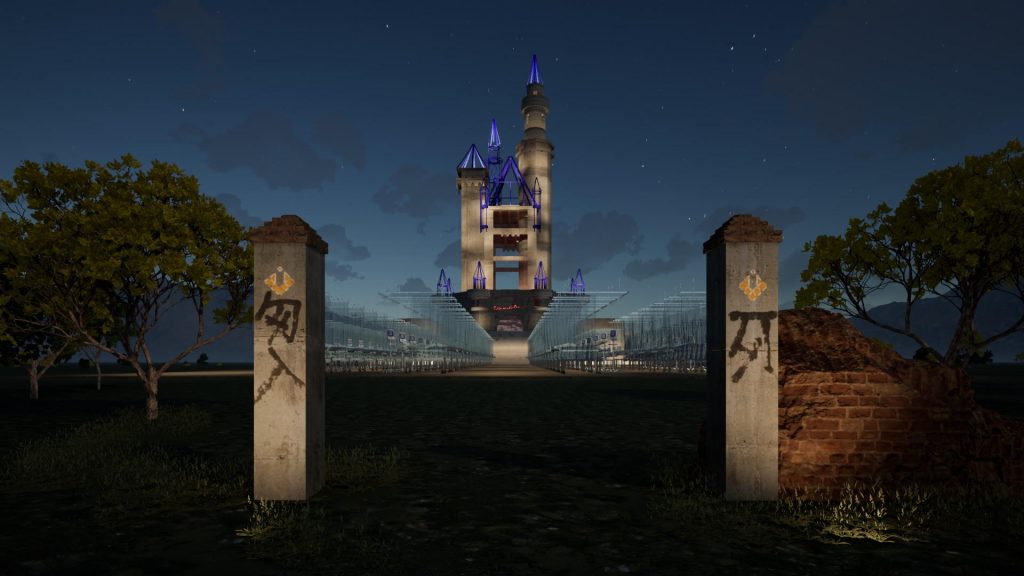
“There was a long time where I was making shows that were going against the institution, because there were a lot of obvious issues with how people are represented within these spaces.”
With EPOCH, it’s an artwork within itself and an extension of Wu+’s artistic practice made to give back and support the work of queer/trans artists and artists of color, who oftentimes aren’t represented in the marketplace. Wu+ runs this project completely on his own through creating and coding the virtual spaces, coming up with the concept and curating the artists for each show, helping the artists create for a virtual format and all administration and marketing work.
“Nothing’s going to replace the institution. But, there’s definitely a space for what I am doing virtually. And, I think, especially now, we are at a certain juncture brought forth by the validation of digital artworks in the marketplace. It’s definitely seen as a force to be reckoned with now.”
The validation of digital art is in part related to the NFT vogue. NFTs, or non-fungible tokens, are computer files, or certificates, that prove ownership of something. NFTs have taken over the art world during the pandemic. According to a survey by Nonfungible, art sales involving NFTs grew from around 600 in 2018 to almost 13,000 in 2020 (shown in the graph below). Forbes stated that the market cap for NFTs has raised 1,785% in 2021 alone due to such a high demand.
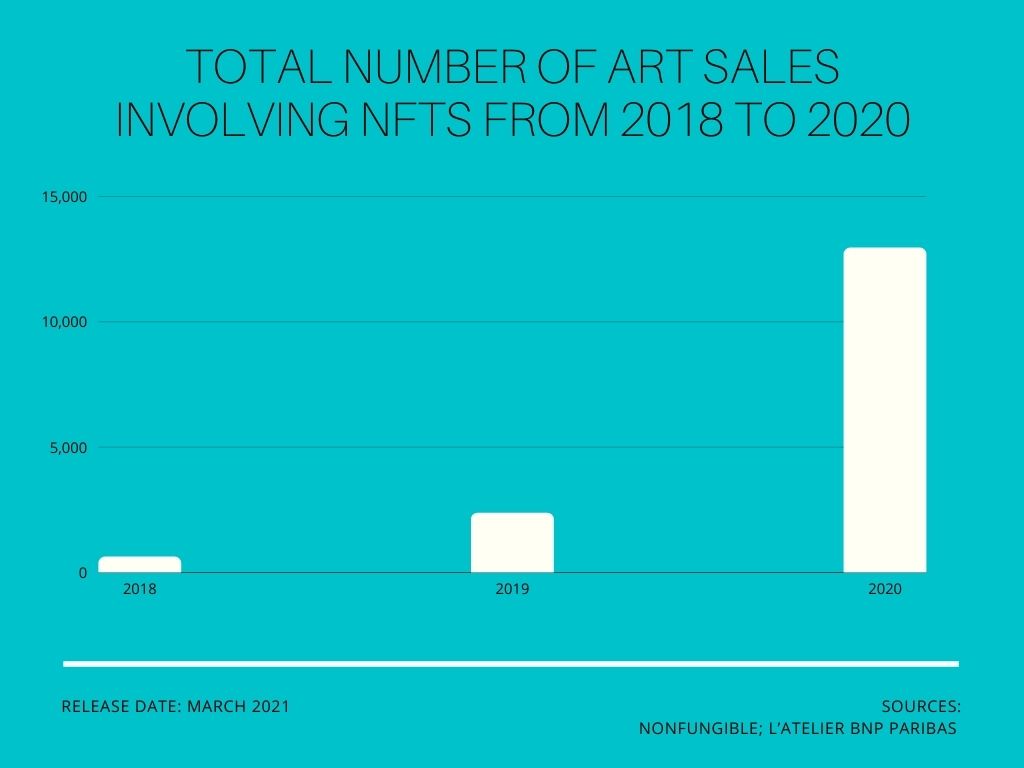
NFTs are hard to comprehend for most people and have a negative environmental impact because of its energy use. Student artists (featured in the audio piece below) are against the trend but understand that it can be a good amount of income for a struggling artist who is deserving of the funds. Nevertheless, the consensus seems to be that the effects on the environment outweigh the benefits of a high pay day.
What do up-and-coming artists think about NFTs? Student artists share their thoughts on the cryptocurrency.
Interviewees (in order): Serena Suggs, Andrea Marin, Jasmine Sears, Yong Loh and Saul Singleton.
Paul Slocum of And/Or Gallery in Pasadena prefers to avoid NFTs, explaining that digital conservation and authentication of that kind is unnecessary and seems more so like a campaign marketing tool.
“The people who bought Beeple are reselling that value by token. It all just kind of seems like a marketing expenditure for cryptocurrency,” says Slocum.
And/Or Gallery’s artists seem to have mixed reviews on NFTs with some happily participating in the trend while others are totally against them. And/Or Gallery showcases a lot of digital artwork, so NFTs would seem to be right up their alley.
However, a recent newsletter they sent out on April 1 includes a quote from one of the gallery’s collectors, saying, ““The problems NFTs purport to solve (authentication, provenance, scarcity) were never really problems, and they potentially introduce entirely new problems.” The email encourages the buyer to instead support the artist and gallery directly, especially with their re-opening in the spring.
It’s hard to know what a post-pandemic future will look like, let alone how to prepare for it. Re-opening of galleries at this time are usually soft, limited capacity and most definitely still mask-mandated. Steven Wong, the Museum Director at Vincent Price Art Museum, says that they will have smaller scale shows instead of a grand opening when they open back up to the public.
“It’s too risky for us – to put all our eggs in one basket,” Wong says.
Wong is mainly wondering how they can keep virtual programming going while also opening to the public. Virtual galleries, like the aforementioned EPOCH Gallery, opens the space to more than just locals or tourists. It gives any viewer the chance to be exposed to more works and artists that they could not see before. Wong recognized this during the pandemic.
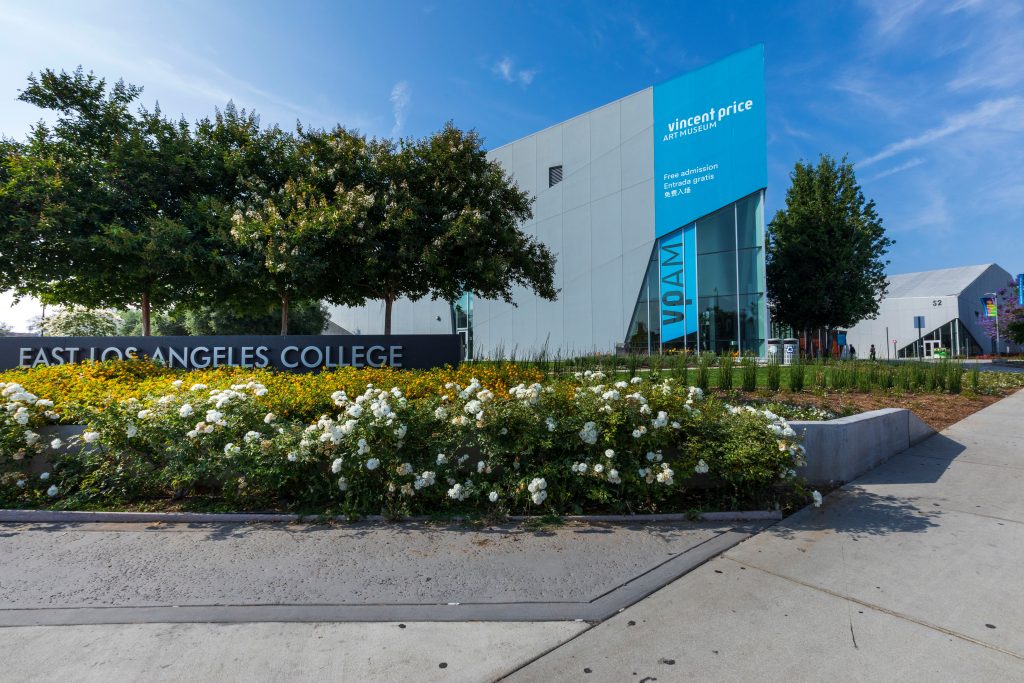
“COVID transformed audiences and transformed how we view programming. You didn’t have to be in the same geographically specific [or] in the same neighborhood as the museum to attend programs.”
Wong only started at the museum a few months ago, working at the Los Angeles Municipal Art Gallery prior to joining VPAM. At the start of the pandemic, LAMAG had to figure out how to continue programming but virtually. So, they turned to video content, interviewing artists about their work and posting it online, in addition to holding online shows. They were getting views from all over.
“[It was] a new opportunity to outreach to a population who didn’t have to be there physically. We had people coming in to view our programs, to watch our videos from all over the place. So, that was the silver lining,” says Wong, who eventually carried over these ideas to VPAM.
Longtime Los Angeles art curator Carl Berg also created video content as an alternative to in-person viewing. During the pandemic, he taught himself how to edit videos and make effective and engaging social media posts.
“I’m doing more in terms of social media and different kinds of videos and platforms so that people can get more information on the show and on the artists, not just by coming to the gallery,” says Berg.
Berg plans on continuing to do this post-pandemic for shows in his new alternative space, PRJCT. He hopes to make the shows last longer, so he can take more time to fully and professionally document them.

The pandemic has become an apt moment to reflect, revise and readjust, as many galleries across the city are doing. That includes Navel LA, a non-profit gallery and collective in Los Angeles. According to Navel’s Director, Michael Holt, they’ve spent this year working on clarifying their mission and what their values are, reclaiming their identity as an organization in the process.

“[Initially] what happened is that we started adopting a lot of the rituals of the nonprofit world because we just didn’t take the time to figure out what did we want our own rituals to be,” says Holt.
Through a conversation with their community, their new mission emerged, which turned Navel into a collective that will now be funded by a Navel the non-profit. This way, the company can operate on a horizontal model, better serving their community.
“I think that the pandemic and the uprisings last year provided fertile ground for this type of change to happen. It certainly provided the intellectual space to stop and pause and ask, ‘wait, what are we doing?'” says Holt.
The pandemic has brought about a multitude of changes for artists and administrators alike. Many have struggled within a system that too often overlooks and underfunds the arts; artists and curators have had trouble shifting artwork to an online platform. That said, the virtual space has brought about new innovative ideas and time for reflection on the confines and closed-mindedness of the art world at large. Though some kind of obvious structural change in the art market hasn’t happened yet, local artists, curators and art administrators within the greater Los Angeles art community are taking the initiative to give into the potential of a better creative ecosystem post-COVID.
Header Image: Avenue S (2020) by Jody Zellen. Photo Courtesy of Jody Zellen.

